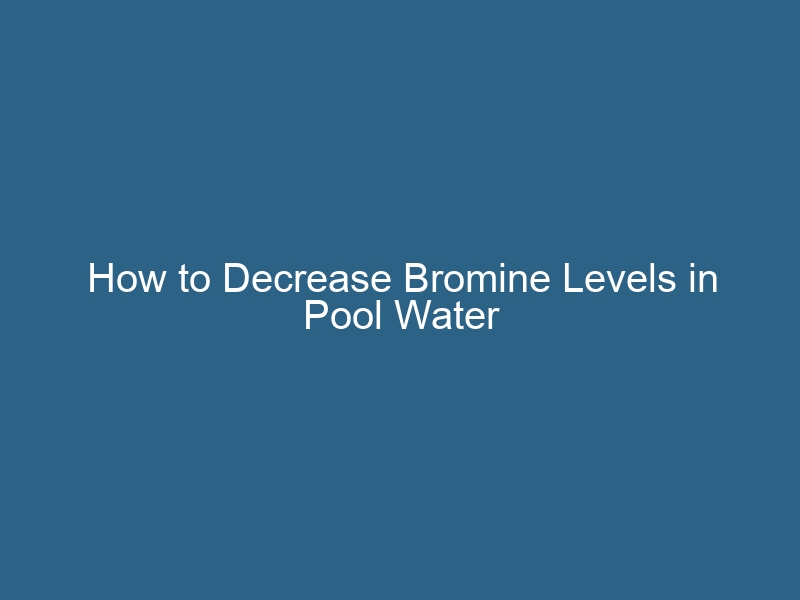Quck answer
To lower bromine levels in pool water:
1. Dilute the water by adding fresh water to reduce the concentration of bromine.
2. Increase the pool’s circulation by running the filter system for longer periods.
3. Use a pool shock treatment specifically designed to reduce bromine levels.
4. Add activated carbon to the pool’s skimmer or filter to absorb excess bromine.
5. Allow the pool to receive sunlight, as UV rays can break down bromine.
6. Use a pool water testing kit to regularly monitor bromine levels and adjust accordingly.
7. Consult a professional if bromine levels remain high despite these efforts.
Bromine is an alternative to chlorine, but it is more commonly used in hot tubs rather than swimming pools due to its higher cost, difficulty in stabilization, and better performance in hot water. Similar to chlorine, bromine can cause skin burns and bleach bathing suits if the concentration is too high. Since bromine is volatile, the simplest way to lower bromine levels is to allow the water to outgas. Another option is to dilute the concentration by adding more water or by neutralizing the bromine using sodium thiosulfate.
Disinfecting With Bromine
Bromine, located just below chlorine on the periodic table, is one of the halogens with a valency of 1. When added to water, it forms hypobromous acid (HOBr) in a similar manner to chlorine forming hypochloric acid (HOCl). Both acids dissociate to produce ions that combine with ammonia compounds to form amines. However, unlike chloramines, bromamines can still act as a sanitizer. The fact that the dissociation of HOBr is less affected by pH compared to HOCl likely makes bromine a more effective sanitizer overall.
The primary drawback of bromine, apart from its cost, is that it is not protected by stabilizers that prevent chlorine degradation from sunlight. Consequently, bromine does not last long in an open pool and requires frequent additions. Due to its greater stability in high temperatures compared to chlorine, bromine is more suitable for sanitizing spas and hot tubs, which typically have covers, rather than open pools.
Can Bromine Levels Become Too High?
In its pure form, bromine is corrosive and has an unpleasant odor, hence its name derived from the Greek word “bromos” meaning “stink.” Although bromamines are less odorous than chloramines, a high concentration of bromine in a pool or hot tub can produce a noticeable and unpleasant odor, particularly when the water remains undisturbed for an extended period. Additionally, it may cause watery eyes, itchy skin, “bromine rash” on the thighs and midriff, as well as corrosion of metals in the pool and circulation system. Therefore, it is essential to maintain bromine levels within the safe range of 2 to 4 parts per million.
Testing Bromine Levels
You can utilize the chlorine tester in your regular pool test kit to measure the bromine level. Some kits include a scale specifically for indicating bromine levels, but if yours does not, simply multiply the number on the free chlorine scale by 2.25 to determine the bromine level.
Lowering Bromine Levels
Bromine is volatile and evaporates quickly from the surface of a pool or hot tub, especially when exposed to sunlight. Therefore, the easiest method to lower bromine levels is to wait for evaporation to occur. If you have a hot tub, leave it uncovered and run the circulation pump to expedite the process.
If you are in a rush to swim or soak and do not want to wait for the pool or tub to release gas, you can decrease the bromine concentration by diluting the water. However, this is usually not practical. Instead, you can add sodium thiosulfate to the water to neutralize the bromine. The amount needed may vary depending on the product, but in general, you would add one or two ounces per 10,000 gallons to lower the bromine level by 1 ppm.
To achieve the fastest neutralizing action, you should stir the granules into a container of water until they dissolve, and then pour the water into the skimmer while running the circulation pump.


